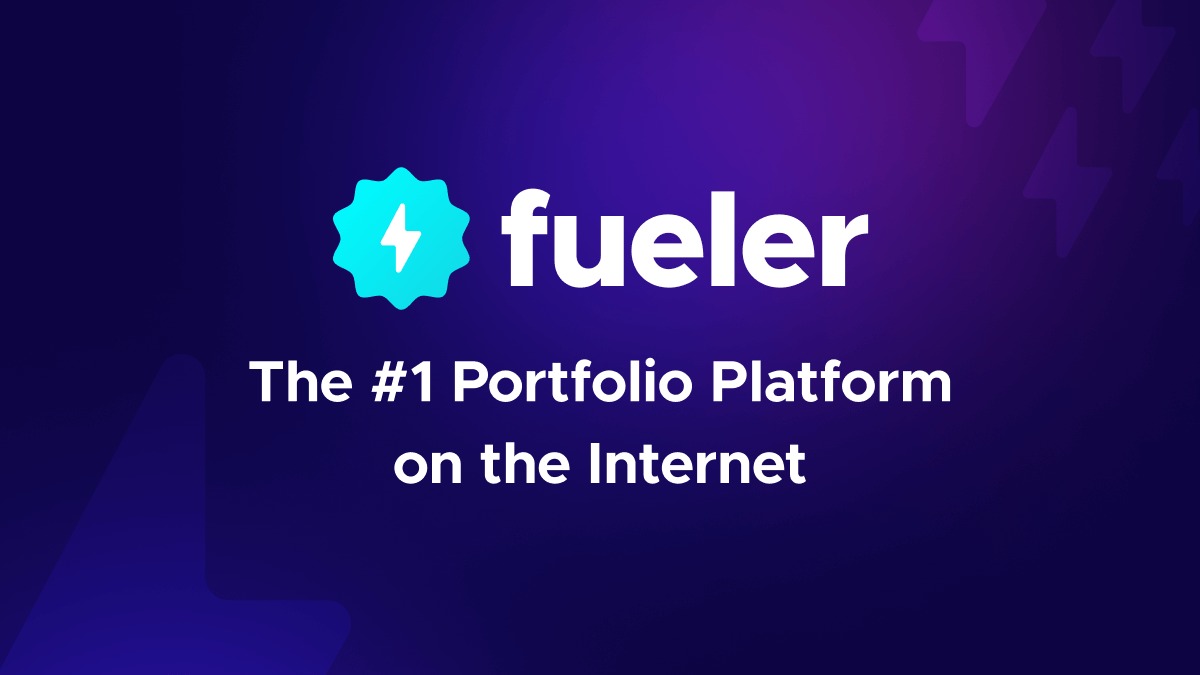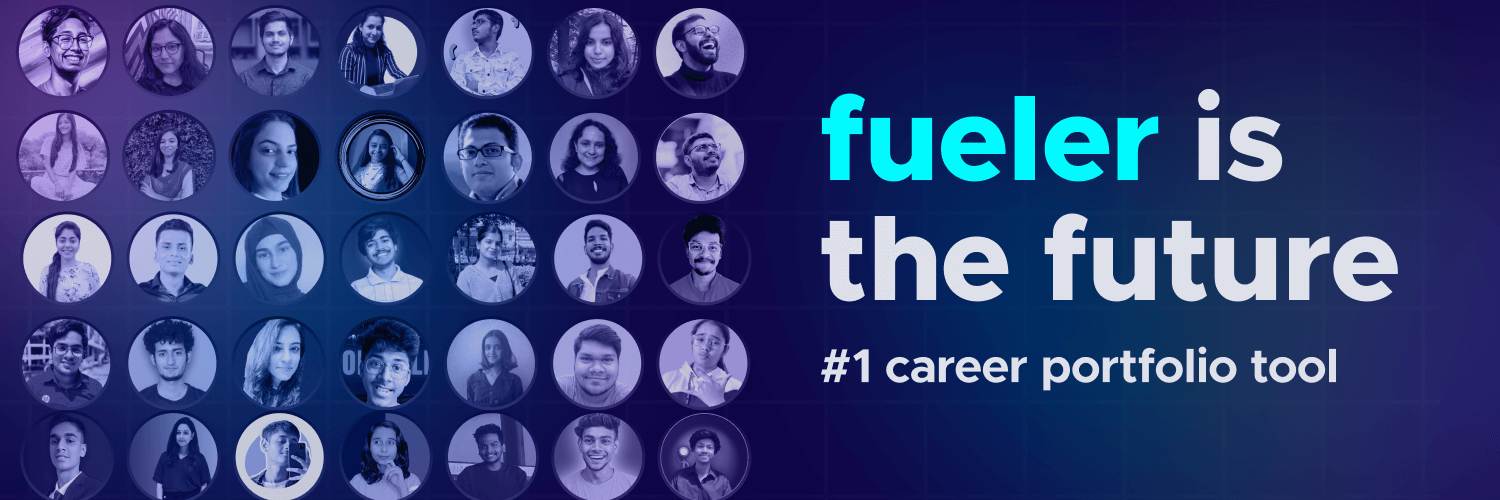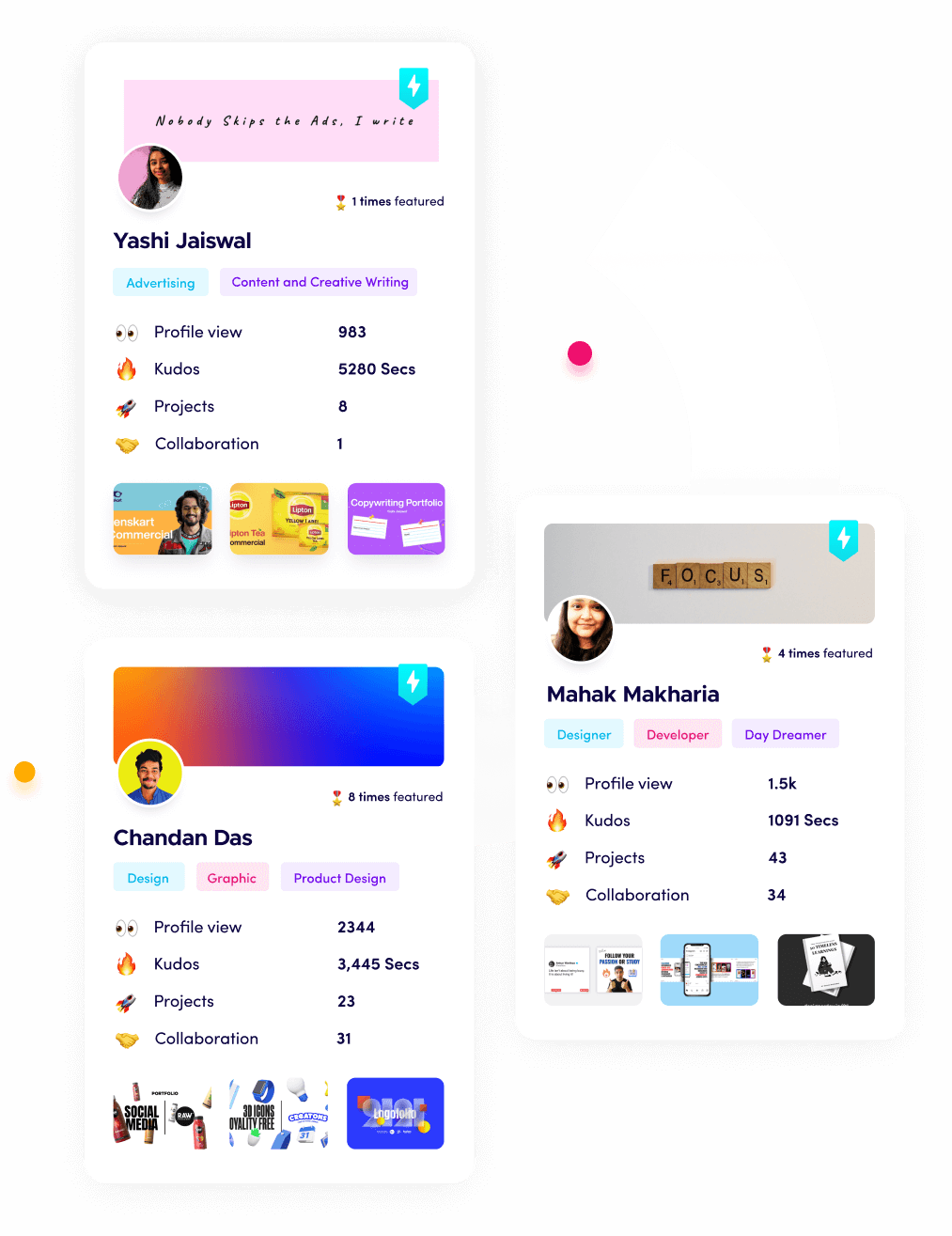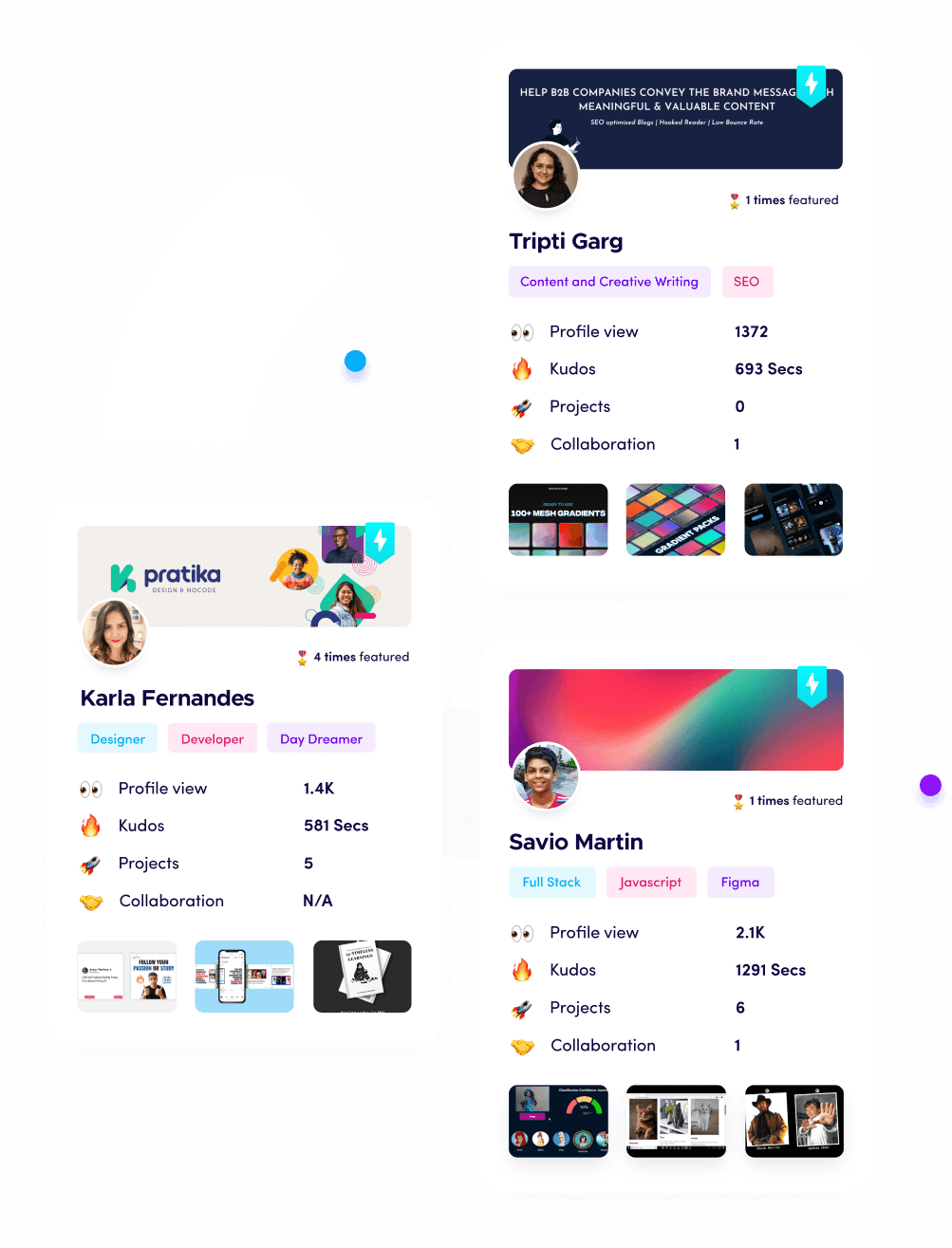How HR Teams Can Build Reward and Recognition Programs

Riten Debnath
12 Jun, 2025

What if a simple “thank you” could boost your team’s productivity by 50% and slash turnover in half? Sounds like magic, right? That’s the power of reward and recognition! As we dive into 2025, creating a workplace where employees feel truly valued is the secret sauce to unlocking motivation, loyalty, and explosive business growth. I’m Riten, and in this ultimate guide, I’ll walk HR teams through everything you need to know to build a reward and recognition program that lights up your workplace. Packed with practical strategies, real-world examples, and the latest trends, this guide will help you transform your team into a motivated powerhouse. Let’s jump in and make recognition your competitive edge!
I’m Riten, founder of Fueler, a platform that helps freelancers and professionals get hired through their work samples. In this article, I’ve walked you through the essentials of reward and recognition in the workplace for 2025. But beyond implementing great programs, the key is showing employees their work matters. A strong reward system isn’t just about perks—it’s proof of your team’s value, impact, and trust. Just like a well-crafted portfolio, an effective recognition program builds credibility and drives success.
What Is Reward & Recognition in the Workplace?
Reward and recognition (R&R) is all about appreciating employees for their hard work, achievements, and positive behaviors. Rewards can be tangible, like bonuses or gift cards, or intangible, like public praise or extra time off. Recognition focuses on acknowledging contributions through verbal or written appreciation. Together, they create a workplace where employees feel valued, boosting their motivation, engagement, and connection to your company’s mission.
In 2025, R&R is evolving fast. Trends like instant recognition apps, personalized rewards, and a focus on employee well-being are taking center stage. A great R&R program aligns with your company’s values, encourages teamwork, and supports long-term goals, making it a must-have for any forward-thinking HR team.
Why Reward & Recognition Matters in 2025
R&R isn’t just about warm fuzzies—it’s a strategic tool that drives business success. Here’s why it’s a game-changer for 2025:
- Skyrockets Engagement: Recognized employees are more passionate and invested, giving their all to their work.
- Slashes Turnover: Feeling valued keeps employees loyal, saving you the cost of hiring and training new talent.
- Boosts Performance: Rewards tied to goals push employees to exceed expectations and drive results.
- Builds a Positive Culture: A culture of appreciation fosters teamwork, trust, and positivity, attracting top talent.
With remote work, Gen Z’s focus on purpose, and mental health priorities shaping 2025, a strong R&R program is non-negotiable for HR teams looking to stay competitive.
20 Key Elements of a Successful Reward & Recognition Program
Below, I’ve outlined 20 essential elements to build a reward and recognition program that transforms your workplace in 2025. Each element includes a detailed explanation, practical tips, real-world examples, and the latest insights from sources like Gallup, Achievers, and Quantum Workplace. These strategies are designed to be actionable, engaging, and aligned with current trends to keep your team motivated and your business thriving.
1. Align Rewards with Company Values
Rewards should reflect your company’s core values, like integrity, innovation, or teamwork, to reinforce behaviors that drive success.
- Why It’s a Big Deal: When rewards align with values, employees focus on what matters most, creating a unified culture. It also shows your commitment to your mission, boosting trust.
- How to Do It: Identify 3-5 core values during strategic planning. Create awards like “Innovator of the Month” for employees who embody these values. Use platforms like Workvivo to announce winners publicly. You platform like Fine Awards to create personalized awards for your team
- Real-World Example: Zappos rewards employees who live its “Deliver WOW” value, strengthening its customer-centric culture.
- Tip: Share stories of rewarded behaviors in company newsletters or all-hands meetings to inspire others.
- Metric to Track: Percentage of employees recognized for value-driven actions.
2. Offer Personalized Rewards
Tailor rewards to individual preferences, like gift cards, extra vacation days, or wellness perks, to make them meaningful.
- Why It’s a Big Deal: Personalized rewards show you care about each employee’s unique needs, making them feel truly valued. This boosts engagement and loyalty.
- How to Do It: Survey employees using tools like Google Forms to learn their preferences. Offer a menu of rewards, from cash to experiences like concert tickets—or timeless gifts such as a Tissot watch for milestone achievements.
- Real-World Example: Deloitte’s reward program lets employees choose perks, increasing satisfaction by 20%, per a 2023 Achievers report.
- Tip: Update reward options annually based on employee feedback to keep them relevant.
- Metric to Track: Employee satisfaction with reward choices.
3. Provide Instant Recognition
Recognize achievements right away, like a shout-out after a big project win, to maximize impact.
- Why It’s a Big Deal: Instant recognition reinforces positive behavior in the moment, keeping employees motivated and engaged. Delayed praise loses its spark.
- How to Do It: Use apps like Bonusly for real-time peer recognition. Train managers to give on-the-spot praise in meetings or via Slack.
- Real-World Example: HubSpot’s instant recognition app saw a 15% engagement boost, per a 2023 case study.
- Tip: Create a dedicated Slack channel for daily shout-outs to keep recognition flowing.
- Metric to Track: Frequency of recognition events per month.
Strategic Fueler Promotion: Just like recognition highlights employee contributions, a strong portfolio showcases talent to the world. At Fueler, our platform helps professionals build portfolios that display their skills through real work samples, making it easier for companies to hire top talent. A great R&R program and a standout portfolio both build trust and drive success—check out Fueler to elevate your hiring process!
4. Encourage Peer-to-Peer Recognition
Let employees recognize each other’s efforts, not just rely on top-down praise from managers.
- Why It’s a Big Deal: Peer recognition builds a collaborative culture and makes everyone feel valued, fostering stronger team bonds.
- How to Do It: Implement tools like Kudos for peer-to-peer shout-outs. Set clear guidelines to ensure recognition is fair and meaningful.
- Real-World Example: Atlassian’s peer recognition program increased team collaboration by 25%, per a 2023 study.
- Tip: Reward employees who frequently recognize others to encourage participation.
- Metric to Track: Number of peer recognitions per employee.
5. Include Non-Monetary Rewards
Offer non-monetary rewards like extra time off, public praise, or flexible hours alongside cash incentives.
- Why It’s a Big Deal: Not everyone is motivated by money—some value flexibility or recognition more, especially Gen Z in 2025.
- How to Do It: Provide perks like a “Day Off Pass” or a “Star Performer” badge. Use platforms like Blueboard for experiential rewards like spa days.
- Real-World Example: Airbnb’s travel credit rewards boost engagement without cash, per a 2023 HR Dive report.
- Tip: Ask employees what non-monetary rewards they value most via surveys.
- Metric to Track: Employee preference for non-monetary vs. monetary rewards.
6. Tie Rewards to Performance Goals
Link rewards to specific, measurable goals, like hitting sales targets or completing projects.
- Why It’s a Big Deal: Goal-based rewards motivate employees to focus on priorities, aligning their efforts with business success.
- How to Do It: Use OKR tools like Peoplebox.ai to track goals. Offer bonuses or gift cards for hitting milestones.
- Real-World Example: Salesforce ties rewards to sales targets, boosting performance by 18%, per a 2023 case study.
- Tip: Use SMART (Specific, Measurable, Achievable, Relevant, Time-bound) goals for clarity.
- Metric to Track: Percentage of employees meeting goal-based reward criteria.
7. Make Recognition Public
Announce achievements in team meetings, company-wide emails, or on digital platforms to amplify their impact.
- Why It’s a Big Deal: Public recognition boosts morale, inspires others, and creates a culture of excellence that attracts talent.
- How to Do It: Share wins on platforms like Slack or Workvivo. Host monthly recognition events or “Employee Spotlights.”
- Real-World Example: Microsoft’s town hall shout-outs increased engagement by 12%, per a 2023 Quantum Workplace report.
- Tip: Create a digital “Wall of Fame” for top performers.
- Metric to Track: Engagement rates after public recognition events.
8. Offer Career Development Rewards
Provide rewards like training programs, certifications, or mentorship to support employee growth.
- Why It’s a Big Deal: Development opportunities show you’re invested in employees’ futures, boosting loyalty, especially among Gen Z in 2025.
- How to Do It: Offer access to platforms like Degreed or LinkedIn Learning. Set up mentorship programs for high performers.
- Real-World Example: Amazon’s upskilling programs reduced turnover by 15%, per a 2023 LinkedIn study.
- Tip: Create a learning budget for each employee to invest in their skills.
- Metric to Track: Number of employees completing training programs.
9. Incorporate Team-Based Rewards
Reward entire teams for collaborative efforts, like completing a major project or hitting a department goal.
- Why It’s a Big Deal: Team rewards strengthen collaboration and unity, critical for hybrid and remote teams in 2025.
- How to Do It: Offer team outings, group bonuses, or shared perks like a team lunch. Use Trello to track team progress.
- Real-World Example: Google’s team rewards for project milestones boosted morale by 20%, per a 2023 case study.
- Tip: Plan fun team-building events, like escape rooms or virtual trivia, as rewards.
- Metric to Track: Team collaboration scores post-reward.
10. Focus on Well-Being Rewards
Offer wellness perks like gym memberships, mental health days, or meditation apps to support employee health.
- Why It’s a Big Deal: Well-being rewards reduce burnout and show you care about employees’ holistic health, a top trend in 2025.
- How to Do It: Partner with platforms like Calm for Business or Wellable. Offer flexible schedules or wellness stipends.
- Real-World Example: Starbucks’ mental health benefits increased engagement by 10%, per a 2023 Mind Share Partners survey.
- Tip: Normalize mental health days in your R&R program.
- Metric to Track: Employee participation in wellness programs.
11. Use Technology for Seamless R&R
Leverage digital tools to make recognition easy, trackable, and scalable across your organization.
- Why It’s a Big Deal: Technology streamlines R&R, ensuring consistency and accessibility, especially for remote or global teams in 2025.
- How to Do It: Use platforms like Bonusly, Kudos, or Achievers for automated recognition. Integrate with Slack or Microsoft Teams for real-time updates.
- Real-World Example: Cisco’s digital R&R tools boosted global engagement by 15%, per a 2023 HR Tech report.
- Tip: Choose tools with mobile apps for instant access on the go.
- Metric to Track: Adoption rate of R&R tools.
12. Train Managers for Effective Recognition
Equip managers with skills to give meaningful, specific praise that resonates with employees.
- Why It’s a Big Deal: Well-trained managers deliver impactful recognition, building trust and boosting team morale.
- How to Do It: Offer training on the SBI (Situation-Behavior-Impact) model. Use tools like 15Five for feedback coaching and tracking.
- Real-World Example: Adobe’s manager training program increased recognition quality by 18%, per a 2023 Zenger Folkman study.
- Tip: Role-play recognition scenarios in training to build confidence.
- Metric to Track: Manager feedback quality scores.
13. Create a Recognition Calendar
Plan regular recognition events, like monthly awards or quarterly celebrations, to keep momentum going.
- Why It’s a Big Deal: A consistent schedule ensures recognition is a priority, maintaining engagement year-round.
- How to Do It: Set up a calendar with tools like Asana. Include events like “Employee of the Month” or “Team Win Day.”
- Real-World Example: Hilton’s recognition calendar boosted engagement by 14%, per a 2023 case study.
- Tip: Tie events to company milestones, like product launches or anniversaries.
- Metric to Track: Frequency of recognition events.
14. Offer Flexible Work as a Reward
Allow flexible hours or remote work days as a reward for outstanding performance.
- Why It’s a Big Deal: Flexibility is a top priority for 74% of employees in 2025, per a 2023 FlexJobs survey, boosting satisfaction.
- How to Do It: Create a policy for earning flexible days. Use tools like Toggl to track work hours and ensure productivity.
- Real-World Example: Dropbox’s flexible work rewards increased engagement by 12%, per a 2023 report.
- Tip: Survey employees to understand their flexibility preferences.
- Metric to Track: Employee satisfaction with flexible work rewards.
15. Celebrate Small Wins
Recognize small achievements, like completing a task or helping a teammate, to keep motivation high.
- Why It’s a Big Deal: Celebrating small wins builds momentum and shows employees their daily efforts matter, preventing burnout.
- How to Do It: Offer micro-rewards like coffee vouchers or shout-outs. Track wins with tools like Trello or Monday.com.
- Real-World Example: Shopify’s small win celebrations boosted team morale by 10%, per a 2023 case study.
- Tip: Create a “Win of the Week” award for small achievements.
- Metric to Track: Number of small wins recognized monthly.
16. Ensure Fair and Inclusive Recognition
Make sure recognition is equitable across roles, departments, and demographics to avoid bias.
- Why It’s a Big Deal: Inclusive recognition builds trust and ensures everyone feels valued, fostering a diverse and equitable workplace.
- How to Do It: Use analytics from tools like Peoplebox.ai to monitor recognition distribution. Set clear, transparent criteria.
- Real-World Example: Accenture’s inclusive R&R program increased diversity engagement by 15%, per a 2023 report.
- Tip: Audit recognition data quarterly to ensure fairness.
- Metric to Track: Recognition distribution across demographics.
17. Link Recognition to Company Purpose
Tie recognition to your company’s mission to give employees a sense of purpose and meaning.
- Why It’s a Big Deal: Purpose-driven recognition makes work feel meaningful, increasing engagement for 80% of employees, per a 2023 McKinsey survey.
- How to Do It: Highlight how contributions support the mission in recognition messages. Use Workvivo to share impact stories.
- Real-World Example: Patagonia’s purpose-driven recognition reduced turnover by 10%, per a 2023 study.
- Tip: Share customer success stories in recognition messages to show impact.
- Metric to Track: Employee sense of purpose scores.
18. Offer Monetary Rewards Strategically
Use bonuses or raises thoughtfully, tying them to clear achievements or milestones.
- Why It’s a Big Deal: Monetary rewards motivate employees when used strategically, but overuse can reduce their impact.
- How to Do It: Offer performance-based bonuses via tools like Gusto for payroll. Be transparent about reward criteria.
- Real-World Example: Tesla’s performance bonuses drove a 20% productivity increase, per a 2023 case study.
- Tip: Combine monetary rewards with public praise for maximum effect.
- Metric to Track: Impact of monetary rewards on performance.
19. Gamify Recognition Programs
Use gamification, like points, badges, or leaderboards, to make recognition fun and engaging.
- Why It’s a Big Deal: Gamification adds excitement and boosts participation, especially for younger employees in 2025.
- How to Do It: Use platforms like Bonusly for point-based recognition. Create leaderboards for top recognizers.
- Real-World Example: Deloitte’s gamified R&R program increased participation by 25%, per a 2023 HR Dive report.
- Tip: Offer redeemable points for fun rewards like gadgets or experiences.
- Metric to Track: Employee participation in gamified programs.
20. Measure R&R Program Impact
Track the success of your R&R program with metrics like engagement, retention, and productivity.
- Why It’s a Big Deal: Measuring impact ensures your program delivers results and helps you refine it for maximum effectiveness.
- How to Do It: Use tools like Culture Amp to track engagement scores. Survey employees about R&R satisfaction quarterly.
- Real-World Example: IBM’s R&R analytics improved program ROI by 15%, per a 2023 case study.
- Tip: Set KPIs like engagement or turnover reduction to measure success.
- Metric to Track: Engagement score improvement post-R&R implementation.
Final Thoughts
Reward and recognition in 2025 is your secret weapon to create a workplace where employees feel valued, motivated, and connected to your mission. These 20 strategies—from personalized rewards to gamified programs—give HR teams the tools to drive engagement, slash turnover, and boost performance. Start small, leverage technology, and keep your program fair and inclusive. By building a culture of appreciation, you’ll unlock your team’s full potential and set your business up for unstoppable success in 2025 and beyond. Let’s make recognition the heart of your workplace!
FAQs
1. What are the best reward and recognition programs for 2025?
Top programs include peer-to-peer recognition, personalized rewards, and gamified systems using tools like Bonusly, Kudos, or Workvivo. They boost engagement and align with company values.
2. How can HR teams improve employee recognition in 2025?
Use instant recognition apps, train managers on feedback, and offer tailored rewards. Tools like 15Five and Culture Amp streamline and measure recognition efforts.
3. Why is reward and recognition important for employee engagement?
R&R boosts morale, reduces turnover, and drives productivity by showing employees their work matters. It fosters a positive culture and aligns teams with business goals.
4. What tools can HR teams use for reward and recognition in 2025?
Popular tools include Bonusly for instant recognition, Fond for customizable rewards, and Peoplebox.ai for analytics. These platforms make R&R scalable and effective.
5. How does recognition impact employee retention?
Recognition makes employees feel valued, reducing turnover by up to 43%, per McKinsey. Regular praise and growth opportunities keep talent loyal and engaged.
What is Fueler Portfolio?
Fueler is a career portfolio platform that helps companies find the best talents for their organization based on their proof of work.
You can create your portfolio on Fueler, thousands of freelancers around the world use Fueler to create their professional-looking portfolios and become financially independent. Discover inspiration for your portfolio
Sign up for free on Fueler or get in touch to learn more.


